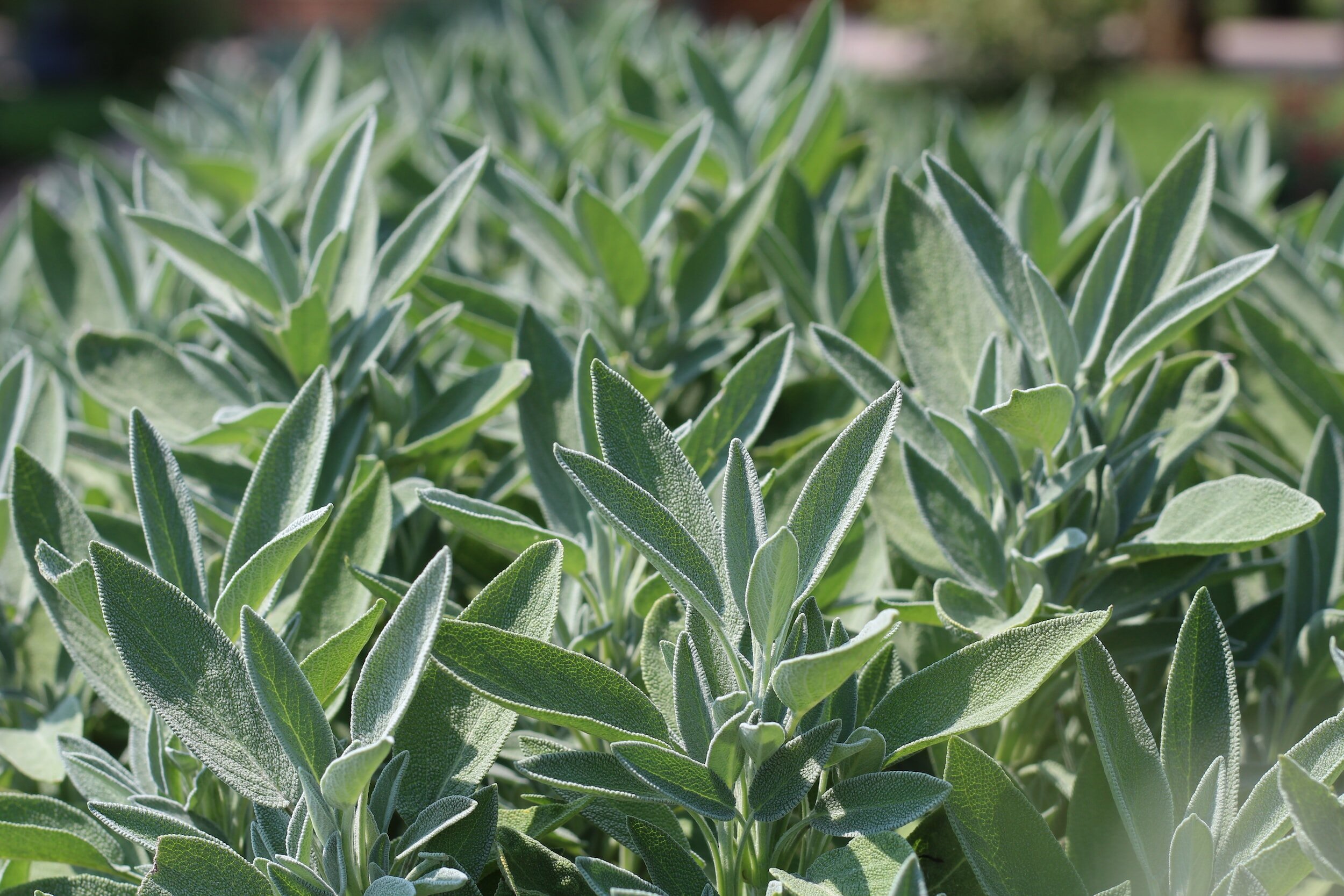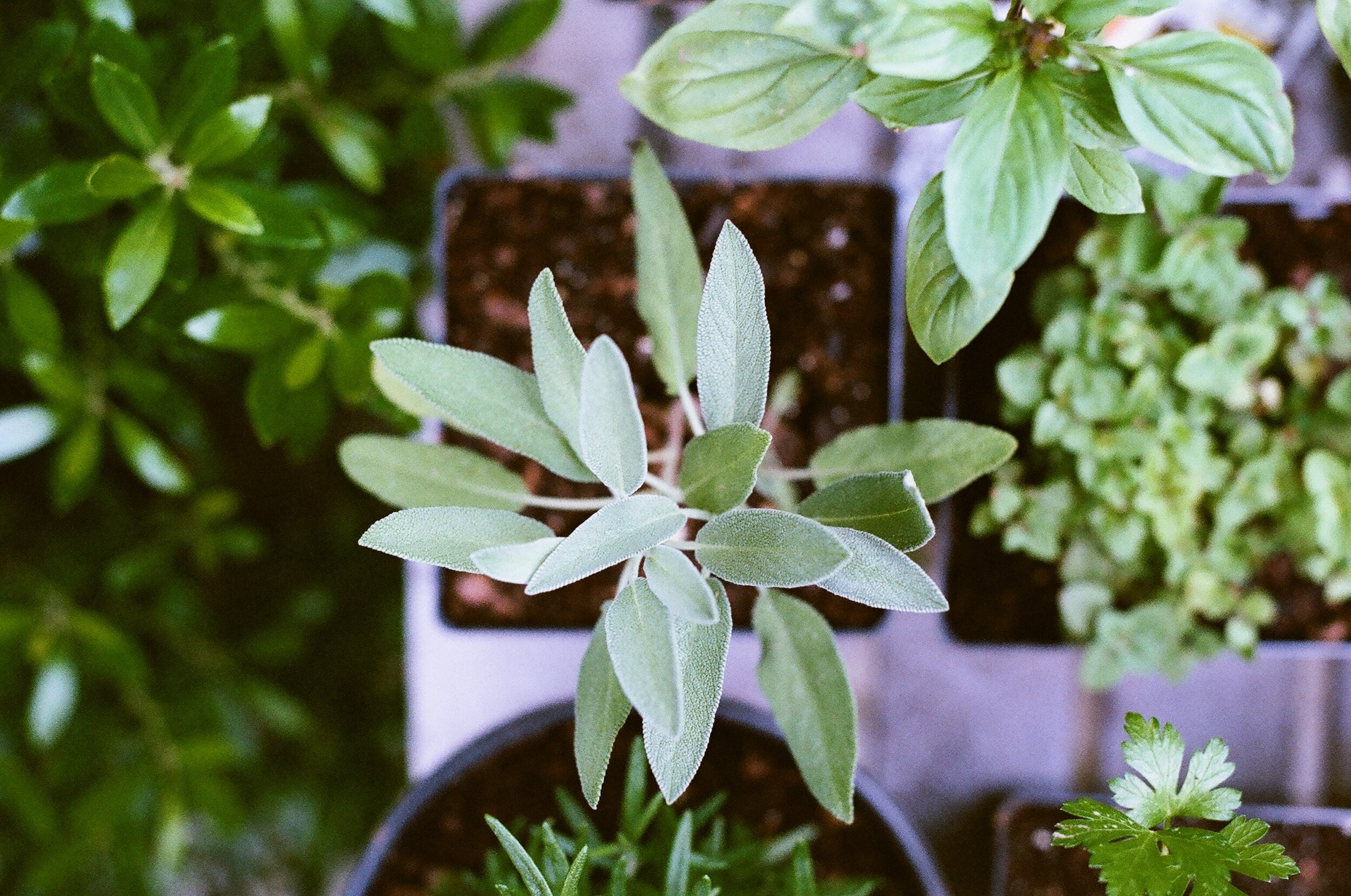How to Harvest Sage
This article has links to products that I may make commission from.
For ages, sage has been celebrated not just for its culinary versatility but also for its myriad of health benefits.
Nestled in gardens worldwide, this herb, with its aromatic gray-green leaves, has become indispensable to many.
If you've ever gazed at your sage plant and wondered about the right time to harvest or the best way to store its fragrant leaves, you're in the right place.
This guide unravels the art and science of harvesting sage, ensuring that you maximize its potential, whether in the kitchen or as a fragrant addition to your home.
To learn more about growing sage, check out my guide:
Understanding Sage: The Basics
Sage, scientifically known as Salvia officinalis, belongs to the Lamiaceae family, commonly known as the mint family.
It's a perennial herb native to the Mediterranean region. The word "Salvia" originates from the Latin term "salvere," which translates to "to save," a nod to its revered healing properties.
Aesthetically, sage is both delicate and robust.
It showcases soft, velvety, gray-green oblong leaves that offer a pleasing contrast in gardens.
During late spring or early summer, sage blooms to produce spike-like lavender-blue flowers.
These blossoms are not only a visual treat but also attract bees and butterflies, making the plant a favorite among gardners.
In terms of cultivation, sage is not particularly demanding.
It has a penchant for full sun, although it can manage with partial shade. Well-draining soil is its best companion, and once established, the herb showcases impressive drought resistance.
However, it's essential to ensure it doesn't sit in waterlogged conditions, as this can be detrimental to its growth.
Here are the sage plants I recommend growing:
To learn more about harvesting herbs, check out my guides:
Recognizing the Right Time to Harvest
First Year Patience
Starting a garden is always exciting, and it's tempting to harvest your plants at the first sign of growth.
However, with sage, patience in the initial stages pays off. In the first year of planting, the sage plant focuses its energy on root development and growth.
Waiting until its second year not only ensures a more bountiful harvest but also strengthens the plant, allowing it to thrive in subsequent years.
When is Sage Ready to Harvest?
For those unfamiliar with the growth patterns of sage, determining the right time to harvest might seem challenging.
A reliable indicator of readiness is the appearance of fully-formed, vibrant leaves.
These leaves, lush and aromatic, signify that the sage is mature and ready to offer its flavorful bounty.
Harvesting at this stage ensures that you get the most out of your plant in terms of taste and aroma.
Seasonal Harvesting
Seasonality plays a pivotal role in the flavor profile of many herbs, and sage is no exception.
If you're gearing up for a pre-winter harvest, the optimal window is late summer to early fall.
During these months, sage leaves are particularly aromatic and flavorful, making them perfect for both culinary and medicinal uses.
The temperate climate and reduced intensity of sunlight during this period contribute to the heightened essence of sage.
After Blooming?
One of the frequently asked questions about sage harvesting revolves around its flowering stage.
Is it okay to harvest sage post-blooming?
The simple answer is yes.
However, there's a caveat. Once sage plants flower, the leaves tend to have a slightly milder flavor.
While still aromatic and usable, if you're seeking the peak essence of sage, it's best to harvest just before the flowering phase begins.
This ensures that the essential oils, responsible for sage's signature taste and aroma, are at their maximum concentration.
Learn more about herbs with my guides How to Take Lavender Cuttings and Where to Plant Feverfew.
Step-by-Step Guide to Harvesting Sage
Tools You Need
When it comes to harvesting sage, there's no need for complex gardening tools.
All you need are sharp, clean scissors or garden shears.
It's crucial that the blades are clean to minimize the risk of introducing any plant diseases.
Regularly cleaning and disinfecting your tools helps in ensuring the longevity and health of your sage plants.
Here are the garden shears that are perfect for the job:
How to Pick Sage
To ensure your sage plant remains healthy and productive, there's a specific technique to picking its leaves.
Snip the stems just above where two leaves intersect.
This method is gentle on the plant, causing minimal stress.
Moreover, it promotes further growth and ensures that the plant remains vibrant for future harvests.
Always be gentle when handling sage to avoid bruising the aromatic leaves.
Harvesting for Specific Uses
Culinary Uses:
Fresh sage leaves are a culinary delight. They add depth and flavor to a myriad of dishes.
For recipes like sage butter, risottos, or poultry marinades, fresh sage leaves are the best choice.
They impart a more potent aroma and taste compared to dried counterparts.
Smudging:
Smudging is an ancient ritual where sage leaves are burned to cleanse spaces and individuals of negative energies.
If you're looking to harvest sage specifically for smudging, it's advisable to choose larger, mature leaves.
These leaves have a broader surface area and hold up better during the drying process, making them ideal for forming smudge sticks.
Expand your herb garden with easy propagation. Check out my guides to learn how:
Preserving Your Sage Harvest
Drying Your Harvest
One of the most common ways to preserve sage is by drying it.
But how exactly do you dry sage to retain its aromatic essence?
Begin by selecting healthy, vibrant leaves from your harvest.
Bundle these leaves together using a string or elastic band.
Hang them upside down in a location that's dry and airy, ideally away from direct sunlight which can degrade the essential oils.
Over the course of several days to a week, the sage will dry out completely.
Once dried, you can either store the sage as whole leaves, which retains more flavor, or crumble them into a coarse powder for easier use.
Ensure you store your dried sage in an airtight container to maintain its freshness.
Here are the containers I love for storing herbs:
Sage Ice Cubes
For those looking for a more novel method of preservation, sage ice cubes are a fantastic option.
This method is particularly beneficial for those who love infusing their hot dishes with a burst of fresh sage flavor.
To do this, finely chop the sage leaves and distribute them evenly in an ice cube tray.
Fill each section with water, ensuring the sage is fully submerged.
Once frozen, these sage-infused cubes can be popped directly into soups, stews, or any hot dish, adding a fragrant touch as they melt.
Avoiding Plant Diseases
The longevity and quality of your sage harvest heavily depend on the health of the plant.
Regular inspection is vital. Look out for any signs of discoloration, spots, or pests on your sage plants.
By catching potential plant diseases early, you can take steps to treat the issue, ensuring that the herbs you're preserving are of the highest quality.
Furthermore, understanding and practicing good gardening hygiene, like disinfecting tools and not over-watering, can preemptively deter many common plant diseases.
For more herb growing tips, check out my guide:
Expanding Your Herb Garden
Expanding your herb garden is more than just a cultivation project; it's an adventure into the world of flavors, aromas, and therapeutic benefits.
If you've already mastered the art of growing and harvesting sage, why stop there?
Many herbs share similar growing and harvesting requirements, making it easier for gardeners to add diversity to their plots.
Thyme
This aromatic herb is a favorite in many kitchens. When harvesting thyme, snip the stems before it flowers to capture the best flavor.
Its tiny leaves can be stripped off the stem post-harvest and used fresh or dried.
Here are the thyme plants I recommend:
Rosemary
This woody herb is not only fragrant but also has a rich flavor profile. Rosemary can be harvested throughout the year.
When harvesting, cut the top one-third of the branches, ensuring the plant continues to thrive.
Learn how to propagate rosemary with my guide.
Here are the rosemary plants I recommend growing:
More Herbs
The beauty of herb gardening lies in its vast variety.
From the subtle sweetness of basil to the peppery punch of parsley, there's an herb for every palate.
As you become more confident in your gardening skills, consider exploring lesser-known herbs, too. Each addition offers a new layer of complexity and excitement to your garden.
Discover my guide to Herbs That Can Be Planted Together: The Best Combinations.
As you diversify your herb garden, you'll quickly find that each plant, while requiring similar care, brings its own unique character and essence.
Growing a range of herbs not only elevates your culinary dishes but also provides a therapeutic sanctuary right in your backyard.
Imagine stepping out and being greeted by a medley of fragrances, each herb whispering its own story. It's a gardener's dream come true.
To learn more about herb gardening, check out my guide How to Start a Raised Bed Herb Garden.
FAQs
How to Harvest Sage Without Killing the Plant
A primary concern for many gardeners, especially those new to harvesting herbs, is ensuring that they don't inadvertently harm their plants.
Sage is a resilient herb, but it still requires a gentle touch. When harvesting, always leave a few inches of the plant intact.
Cutting it too close to the ground can stress the plant and inhibit its future growth.
By leaving some of the stem, you give the sage an opportunity to regenerate, ensuring continuous harvests in subsequent seasons.
How to Dry Sage
The drying process begins long before you hang the sage. To get the best results, harvest sage on a dry morning after any dew has evaporated.
This minimizes the moisture content, speeding up the drying process.
Once harvested, bundle the sage leaves together and hang them in a location with good airflow.
This could be an indoor space like a pantry or an outdoor spot that's shielded from direct sunlight.
Over the course of a week or so, the sage will dry completely, ready for storage or use.
Check out my guide to how to store dried herbs.
How to Harvest White Sage
White sage (Salvia apiana) is particularly revered for its spiritual and medicinal uses.
Given its popularity, it's crucial to approach its harvest ethically. Due to overharvesting in the wild, some populations of white sage have become threatened.
If you're sourcing white sage, ensure it's from a sustainable source.
Ideally, consider cultivating your own white sage plant.
This way, you can monitor its growth and ensure that you're harvesting in a manner that's both respectful and sustainable.
Remember, white sage, like its common sage counterpart, should be harvested by cutting stems, leaving a few inches for regrowth.
Here are the white sage seeds I recommend:
Navigating the world of herb gardening, especially when it comes to herbs like sage, can be a rewarding journey.
From understanding the nuances of selecting individual leaves for harvest to recognizing the signs of mature sage, each step enriches our gardening experience.
As we've explored in this guide, with patience, care, and a few gardening tips, one can truly unlock the full potential of sage and create an aromatic haven in their garden.











































